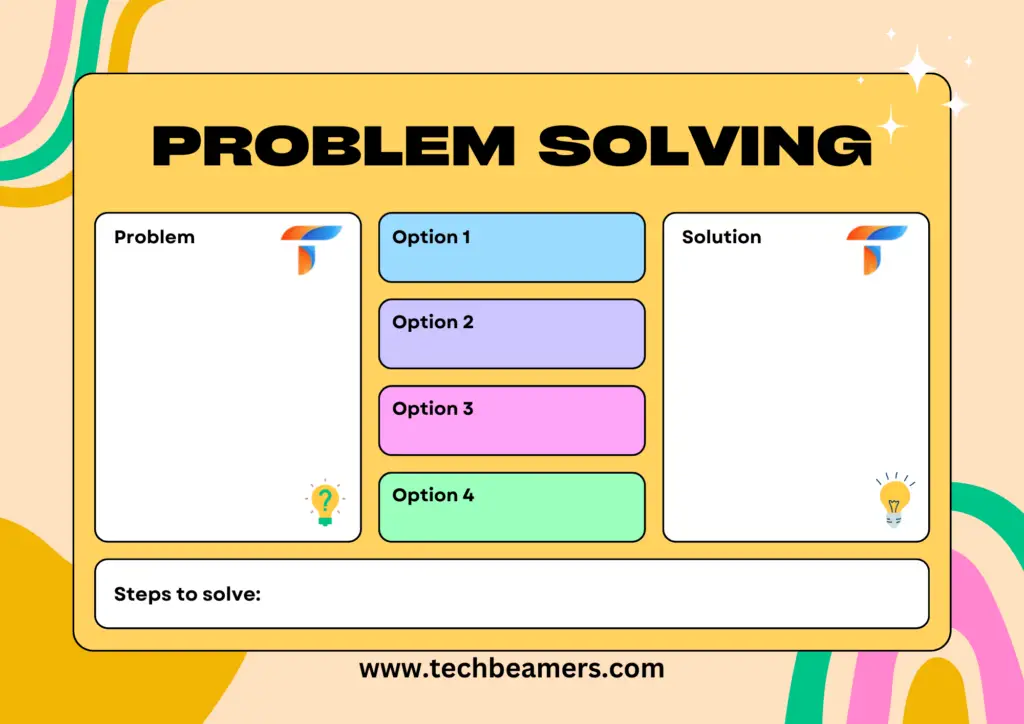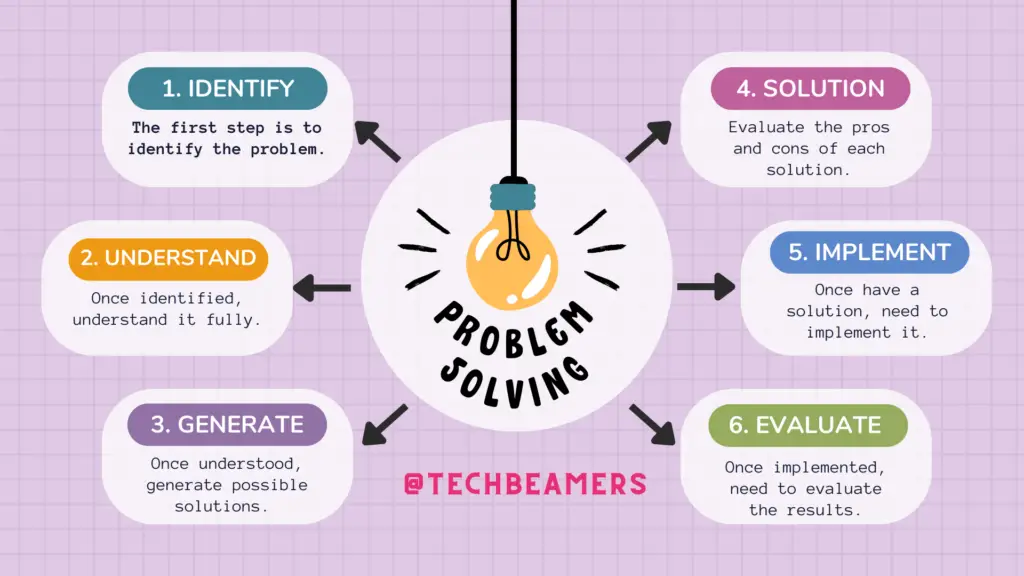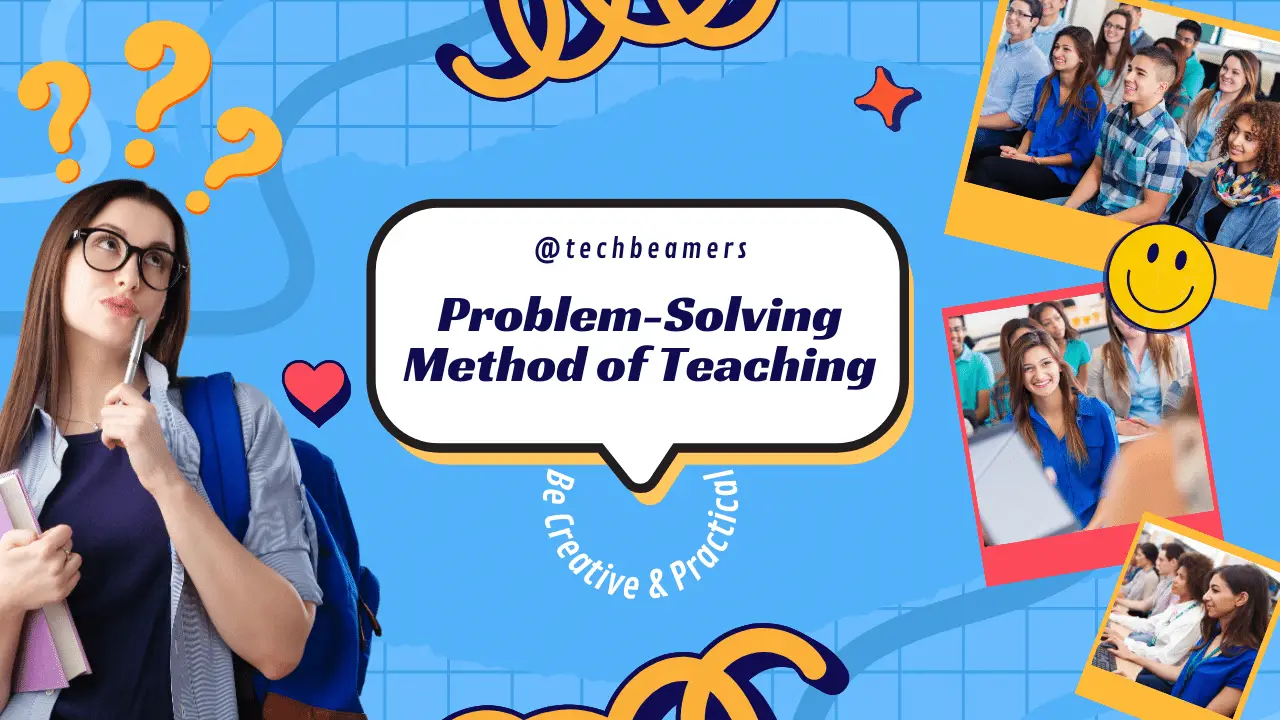You must be interested to know – What is the problem-solving method of teaching and how it works. We’ve explained its core principles, six-step process, and benefits with real-world examples.
- Understand the Problem-Solving Method of Teaching
- What is the Problem-Solving Method of Teaching?
- 5 Most Important Benefits of Problem-Solving Method of Teaching
- Know 6 Steps in the Problem-Solving Method of Teaching
- Find Out Examples of the Problem-Solving Method of Teaching
- How to Use Problem-Solving Methods of Teaching
- How to Choose: Let’s Draw a Comparison
- Before You Leave
Understand the Problem-Solving Method of Teaching
The basis of this modern teaching approach is to provide students with opportunities to face real-time challenges. It aims to help them understand how the concept behind a solution works in reality.
What is the Problem-Solving Method of Teaching?
The problem-solving method of teaching is a student-centered approach to learning that focuses on developing students’ problem-solving skills. In this method, students have to face real-world problems to solve.
They are encouraged to use their knowledge and skills to provide solutions. The teacher acts as a facilitator, providing guidance and support as needed, but ultimately the students are responsible for finding their solutions.

Must Read: How to Tell Me About Yourself in an Interview
5 Most Important Benefits of Problem-Solving Method of Teaching
The new way of teaching primarily helps students develop critical thinking skills and real-world application abilities. It also promotes independence and self-confidence in problem-solving.
The problem-solving method of teaching has several benefits. It helps students to:
#1 Enhances critical thinking
By presenting students with real-world problems to solve, the problem-solving method of teaching forces them:
– To think critically about the situation, and
– To come up with their solutions.
This process helps students develop critical thinking skills essential for success in school and life.
#2 Fosters creativity
The problem-solving method of teaching encourages students to be creative in their problem-solving approach. There is often no one right answer to a problem, so students are free to come up with their unique solutions. This process helps students think creatively, an important skill in all areas of life.
#3 Encourages real-world application
The problem-solving method of teaching helps students learn how to apply their knowledge to real-world situations. By solving real-world problems, students can see:
– How their knowledge is relevant to their lives,
– And, the world around them.
This helps students to become more motivated and engaged learners.
#4 Builds student confidence
When students can successfully solve problems, they gain confidence in their abilities. This confidence is essential for success in all areas of life, both academic and personal.
#5 Promotes collaborative learning
The problem-solving method of teaching often involves students working together to solve problems. This collaborative learning process helps students to develop their teamwork skills and to learn from each other.
Know 6 Steps in the Problem-Solving Method of Teaching

Also Read: Do You Know the Difference Between ChatGPT and GPT-4?
The problem-solving method of teaching typically involves the following steps:
Step 1: Identifying the problem
The first step is problem identification which students will be working on. This requires students to do the following:
– By presenting students with a real-world problem, or
– By asking them to come up with their problems.
Step 2: Understanding the problem
Once students have identified the problem, they need to understand it fully. This may involve:
– Breaking the problem down into smaller parts, or
– Gathering more information about the problem.
Step 3: Generating solutions
Once students understand the problem, they need to generate possible solutions. They have to do either of the following:
– By brainstorming, or
– By exercising problem-solving techniques such as root cause analysis or the decision matrix.
Step 4: Evaluating solutions
Students need to evaluate the pros and cons of each solution before choosing one to implement.
Step 5: Implementing the solution
Once students have chosen a solution, they need to implement it. This may involve taking action or developing a plan.
Step 6: Evaluating the results
Once students have implemented the solution, they must evaluate the results to see if it was successful.
If the solution fails the expectations, students should re-run step 3 and generate new solutions.
Find Out Examples of the Problem-Solving Method of Teaching
Here are a few examples of how the problem-solving method of teaching applies to different subjects:
- Math: Students face real-world problems such as budgeting for a family or designing a new product. Students would then need to use their math skills to solve the problem.
- Science: Students perform a science experiment or research on a scientific topic to invent a solution to the problem. Students should then use their science knowledge and skills to solve the problem.
- Social studies: Students analyze a historical event or current social issue and devise a solution. After that, students should exercise their social studies knowledge and skills to solve the problem.
How to Use Problem-Solving Methods of Teaching
Here are a few tips for using the problem-solving method of teaching effectively:
- Choose problems that are relevant to students’ lives and interests.
- Select those problems that are challenging but achievable.
- Provide students with ample resources such as books, websites, or experts to solve the problem.
- Motivate them to work collaboratively and to share their ideas.
- Be patient and supportive. Problem-solving can be a challenging process, but it is also a rewarding one.
Also Try: 1-10 Random Number Generator
How to Choose: Let’s Draw a Comparison
The following table compares the different problem-solving methods:
| Method | Description | Pros | Cons |
|---|---|---|---|
| Traditional | The teacher presents information to students who then complete exercises or assignments to practice the information. | – Simple and easy-to-follow | – Can be passive and boring for students |
| Problem-based learning | Students are presented with real-world problems to solve. They are encouraged to use their knowledge and skills to deliver solutions. | – Promotes active learning | – Can be challenging for students |
| Inquiry-based learning | Students are asked to investigate questions or problems. They are encouraged to gather evidence and come up with their conclusions. | – Encourages critical thinking | – Can be time-consuming |
Which Method is the Most Suitable?
The most suitable way of teaching will depend on many factors such as the following:
– Subject matter,
– Student’s age and ability level, and
– Teacher’s preferences.
However, the problem-solving method of teaching is a valuable approach. It can be used in any subject area and with students of all ages.
Here are some additional tips for using the problem-solving method of teaching effectively:
- Differentiate instruction. Not all students learn at the same pace or in the same way. Teachers can differentiate instruction to meet the needs of all learners by providing different levels of support and scaffolding.
- Use formative assessment. Formative assessment helps track students’ progress and identify areas where they need additional support. Teachers can then use this information to provide students with targeted instruction.
- Create a positive learning environment. Students need to feel safe and supported to learn effectively. Teachers can create a positive learning environment by providing students with opportunities for collaboration. They can celebrate their successes and create a classroom culture where mistakes are seen as learning opportunities.
Interested in New Tech: 7 IoT Trends to Watch in 2023
Some Unique Examples to Refer to Before We Conclude
Here are a few unique examples of how you incorporate the problem-solving method of teaching with different subjects:
- English: Students analyze a grammar problem, such as a poem or a short story, and share their interpretation.
- Art: Students can get a task to design a new product or to create a piece of art that addresses a social issue.
- Music: Students write a song about a current event or create a new piece of music reflecting their cultural heritage.
Before You Leave
The problem-solving method of teaching is a powerful tool that can help students develop the skills they need to succeed in school and life. By creating a learning environment where students are encouraged to think critically and solve problems, teachers can help students to become lifelong learners.
Lastly, our site needs your support to remain free. Share this post on social media (Linkedin/Twitter) if you gained some knowledge from this tutorial.
Enjoy learning,
TechBeamers.






